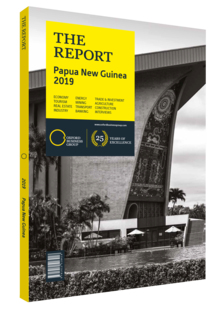Alan Milne, Managing Director, Air Niugini: Interview

Interview: Alan Milne
Which sectors generate the most demand for aviation services in Papua New Guinea?
ALAN MILNE: The success of the aviation sector is inevitably linked to the performance of the economy, specifically regarding extractive industries. This sector is a large employer of both citizens and non-citizens who need to travel to and from their workplace regularly. Demand for airline seats and air freight peaks during the construction phase of a project, so a continuous supply of new projects is beneficial to local airlines. One issue is that the level of mining activity is driven by fluctuating global commodity prices, making it difficult for airlines to forecast and therefore make investment decisions.
Moreover, the government’s focus on becoming more self-sufficient, especially in agriculture, could boost important economic activity and thus aviation. Tourism, though, is probably the sector with the most potential for generating a new customer base. Collaboration with the Tourism Promotion Authority will be key to taking advantage of newer opportunities.
How would you assess the quality of corporate governance within the aviation sector?
MILNE: High-quality corporate governance is absolutely required, not only from a regulatory perspective, but also from a business standpoint. Improving this requires a refined management system, the securing of robust operations within all stages of business and the ability to efficiently adapt to market trends, which greatly relies on improving cooperation. The sector has two main players, but understandably they have not always been the most cooperative due to a backdrop of fierce competition for customers and fares. However, aviation companies in some other countries do succeed in working together. This is most clearly seen in the sharing of safety information, and also in terms of operations. This can make all the difference if there is an insufficient supply of equipment, or if an aeroplane must be removed from service, then as a result passengers can be shared between airlines. This has not historically been the case in PNG, as the aviation sector in this country, contrary to Australia, is an industry run by individuals. For this reason we must carefully examine opportunities to identify those winwin situations. Reducing costs will better position both airlines to compete for the customer base and ensure the availability of competitive airfares.
In what areas do you identify the most urgent need for infrastructure investment?
MILNE: Significant infrastructure investment projects in airports, especially runway and terminal facility upgrades, are already under way through the government’s Civil Aviation Development Investment Programme. However, these projects should be extended. In order for airports to permit all-weather and night operations, they must be equipped with modern technologies to improve lighting, landing and navigation assistance. This will enable airlines to use larger, more efficient aircraft in addition to extending their daily operations. These upgrades would significantly lower unit costs and potentially airfares and freight rates.
More importantly, airports need to be connected to nearby population and business centres through a safe network of roads so that public and private transport can become available outside of daylight hours. At the moment customers can only fly when and where they want to. For example, Nadzab Airport is connected to the city of Lae by a poor-quality road that is quite unsafe at night. Solving this issue would give customers more opportunities to fly there. Therefore, in many places, improvements to the implementation of law and order are required. One success story is the Kieta Airport in Bougainville, as the local community there raised some funds and allocated these successfully in the areas that needed them, thus an alternative to the main airport in Buka was created. These are the types of infrastructure projects that we are trying to encourage across PNG.
You have reached the limit of premium articles you can view for free.
Choose from the options below to purchase print or digital editions of our Reports. You can also purchase a website subscription giving you unlimited access to all of our Reports online for 12 months.
If you have already purchased this Report or have a website subscription, please login to continue.

